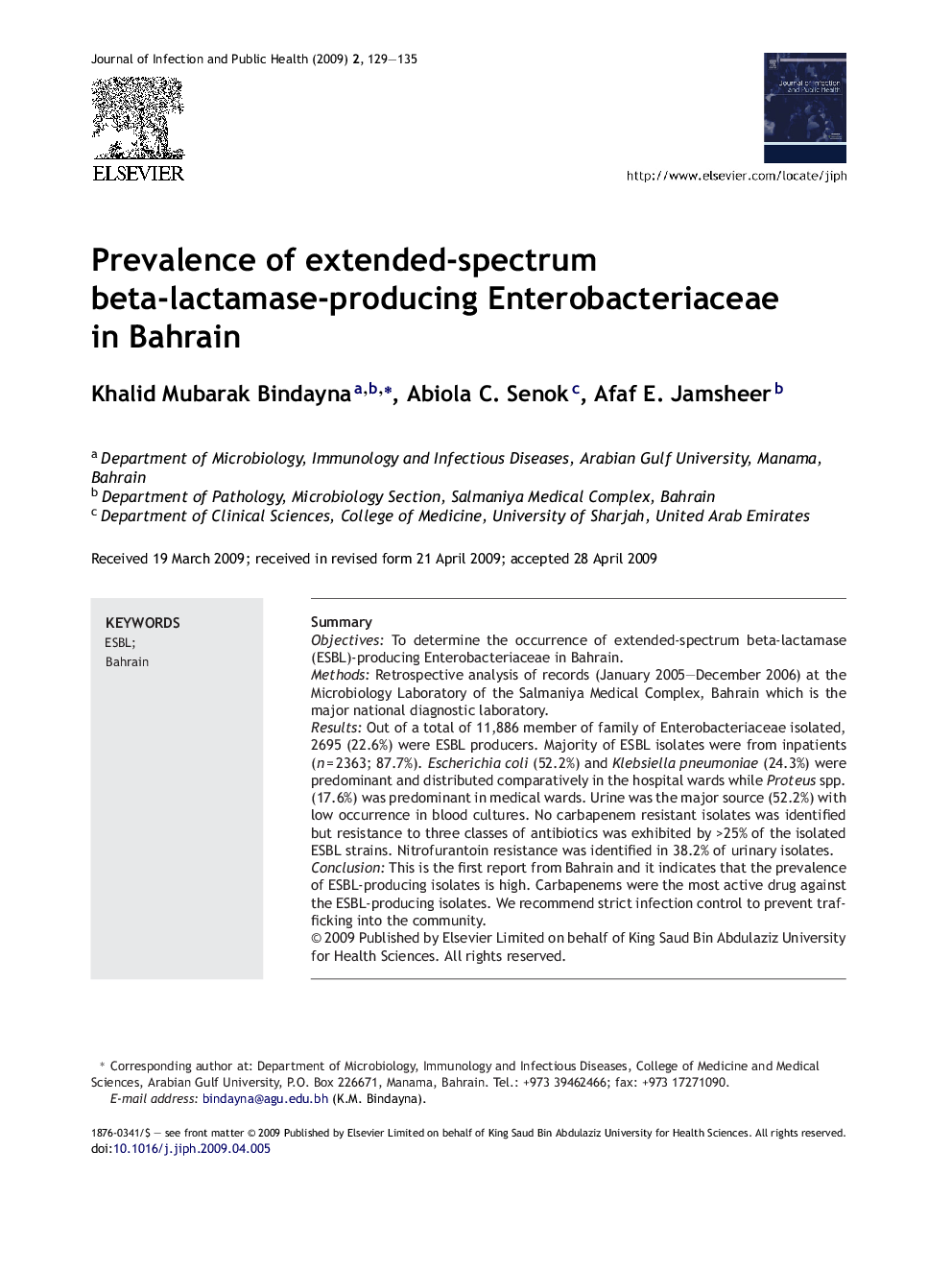| Article ID | Journal | Published Year | Pages | File Type |
|---|---|---|---|---|
| 3406365 | Journal of Infection and Public Health | 2009 | 7 Pages |
SummaryObjectivesTo determine the occurrence of extended-spectrum beta-lactamase (ESBL)-producing Enterobacteriaceae in Bahrain.MethodsRetrospective analysis of records (January 2005–December 2006) at the Microbiology Laboratory of the Salmaniya Medical Complex, Bahrain which is the major national diagnostic laboratory.ResultsOut of a total of 11,886 member of family of Enterobacteriaceae isolated, 2695 (22.6%) were ESBL producers. Majority of ESBL isolates were from inpatients (n = 2363; 87.7%). Escherichia coli (52.2%) and Klebsiella pneumoniae (24.3%) were predominant and distributed comparatively in the hospital wards while Proteus spp. (17.6%) was predominant in medical wards. Urine was the major source (52.2%) with low occurrence in blood cultures. No carbapenem resistant isolates was identified but resistance to three classes of antibiotics was exhibited by >25% of the isolated ESBL strains. Nitrofurantoin resistance was identified in 38.2% of urinary isolates.ConclusionThis is the first report from Bahrain and it indicates that the prevalence of ESBL-producing isolates is high. Carbapenems were the most active drug against the ESBL-producing isolates. We recommend strict infection control to prevent trafficking into the community.
